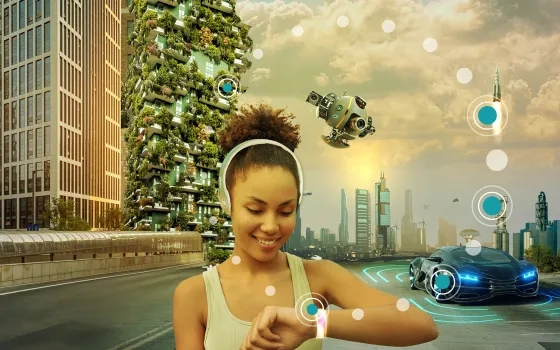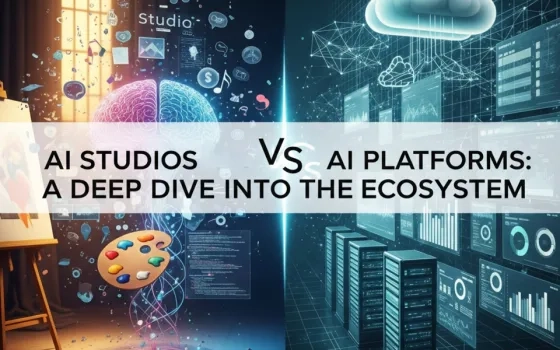The year was 1962, and television audiences had a glimpse into an aspirational look into the future. The American Broadcasting Corporation (ABC) aired a show about a family that lives in a futuristic megacity with flying cars, smart houses, an automated workforce, virtual reality, and a wide range of intelligent living solutions. Fast forward 60 years, and the life of The Jetsons seems fairly normal. Technology has not only proliferated our daily lives but has become an inherent part of every decision that is being made. And here’s how.
The age of The Jetsons is here
Technology is not just constructing the future from a blueprint; it is orchestrating it. In 2019, nearly 57% of homes in Britain and 69% of US households contained at least one smart device. The consumer-centric adoption of technology is scaling rampantly, with predictions estimating that there will be nearly 478.2 million smart homes in the world by 2025.
Imagine a scenario where a person has had a fall. Their smartwatch notifies the nearest ambulance of the mishap. As the patient is being wheeled into the ambulance, medical teams are alerted within a nearby health system and are able to prepare standby teams to begin care delivery. The ambulance is able to communicate with the city grid, instantly providing them with green light clearance across all traffic systems. As the patient is being wheeled into the hospital, the hospital retrieves all patient data across its EHR systems and obtains necessary payer authorizations. The patient needs immediate surgery; however, a standby surgeon is unavailable. Remote tools allow a surgeon from another hospital or city to perform precision surgery. While the patient regains mobility, he is still able to remotely go to work and attend all meetings, providing a semblance of normalcy with minimal disruption to his lifestyle.
We are not far from this reality. In fact, we are much closer to this possibility than we were 36 months ago. With the integration of smart technology in our homes, workplaces, infrastructure, healthcare, and other industries, there is a great likelihood that an average person can interact with a smart device every 10 seconds.
It is what the new world looks like. But many ask, what is the new world?
Navigating through the Megatrends that define the “NEW” world
Our future is a combination of three worlds. The new normal, where remote work, geo-political climates, and other factors have forced people to circumnavigate the conventions of everyday engagements. New physical worlds are gaining mass interest with the predominance of SPACE X, Blue Origin and Virgin Galactic, that promise to set up life in outer space or on Mars. Or new virtual worlds, such as Facebook’s Metaverse and NVIDIA’s Omniverse, are challenging the boundaries of physical interaction, providing virtual spaces for engagement and collaboration.
The intersection of these new worlds is ushering in megatrends that will reshape the course of how technology and society will engage with each other. If you look at them broadly, the megatrends can be categorized into five categories, the fabric of which will impact every aspect of our daily touchpoints.
Digital Healthcare: Across healthcare, lifestyle, or well-being, intelligent devices are collecting a vast amount of information to play a pivotal role in preventive safety and the well-being of human lives. Today, a simple search on YouTube will deliver hundreds of videos that showcase how Tesla and Apple have pioneered their crash prevention/detection technology. Similarly, at a more personal level, Apple’s in-built ECG and fall detection are already demonstrating examples of proactive intervention and saving people’s lives. Improving human lives will also transcend into their everyday work by finding the balance between virtual and physical work.
Industry 4.0 and Smart Operations:
The way we work will change manufacturing operations and go paperless with support from Digital Thread / Digital Twin, and the need for humans to engage in physical labor will soon be mitigated. Realtime sensor data, Analytics, AI, and Edge computing will play a major role in performing beyond the rule-based workflows and assisting in prescriptive actions to ensure efficiency and quality that would deliver favorable outcomes. Smart manufacturing is making huge strides, and interventions like humanoid robots from firms like Boston Dynamics, Autonomous Mobile Robots managing warehouse operations with intelligent material handling, and context awareness to optimize manufacturing processes to increase their productivity will be the future.
Intelligent and meta mobility: Sustainability will be key in the future of the movement. Technologies like software-defined everything, autonomous systems, and shared mobility will push the envelope of transportation. Organizations like Double Robotics and others who are pioneering UAVs and AAVs will gain importance as they minimize the need for physical presence at places of work. Technologies like PORTL’s holo-presence will catalyze this transformation. Decongestion will play a critical role in changing transportation, with intelligent traffic grids better managing throughput within smart cities. The next few years are expected to witness rampant growth in Autonomous vehicles, Electric vehicles, and Connected Vehicles, all of which will drive a new era in mobility.
Sustainability: Massive investments are being made in helping organizations steer towards a more circular economy. With natural resources depleting at an alarming rate, industries such as manufacturing, oil & gas, shipping, agriculture, mining, CPG, and infrastructure development are leading the way in implementing sustainable solutions. More importantly, the push from governments with new legislations that are focussed on driving a positive impact on the environment is encouraging organizations to find new solutions in sustainability. A majority of the efforts in sustainability are focused on alternative energy sources, waste management, reducing carbon footprint, green manufacturing, and alternative materials.
Space systems: The Space Race has opened new opportunities to explore investments in space technologies and systems. Across private and public sectors, investments are being made in developing reusable rockets and satellites that can enable Low Earth Orbit (LEO). Industries such as communications are poised to drive the growth of this market with advancements in Earth observation and Positioning, Navigation, and Timing (PNT). Lower launch costs and a reduction in satellite weight have democratized the space systems market to drive technological developments across a wide range of industries.
Orchestrating the future, a symphony of technology
When you go back to think about The Jetsons, it was not one gadget or device that piqued the interest of the audience. The city (or megacity) was connected, and every element within it was able to communicate with each other. The underlying technologies are the building blocks that are shaping this future. Data Modernization and Analytics are opening up huge opportunities that pave the way for intelligent solutions. EDGE and Fog computing is pushing the threshold of possibilities that AI delivers to create a truly intelligent ecosystem. The triage of MEMS and sensors, along with modern network connectivity such as 5G, LTE, and the underlying layer of software, firmware or middleware as the fabric, is what puts intelligent technology at the forefront of building smart cities.
Finding the right technology mix is not a single-handed feat. It requires partnerships between governments, non-profits, and the people. Most importantly, it demands implementation partners who have a shared vision as well as the scale and ability to bring these projects to life.
Considering we all know where the future is headed, it begs the question: how quickly do we want to get there? Are we all in the same shared vision of designing tomorrow together?
If you would like to learn more about the megatrends that are driving the future of organizations, you can read the independent research from Cyient and Everest Group here.
About the Author

Rajaneesh Kini CTO - Cyient
As Cyient’s Chief Technology Officer, Rajaneesh Kini focuses on building a knowledge roadmap that determines the Technology Solutions landscape at Cyient. He and the technology team collaborate to create competitive, relevant, and market- ready offerings and solutions and identify and seed new skills required across our organization. He is also the driving force behind implementing solutions developed through our innovation platform – Cyientifiq. Rajneesh has over 23 years of experience in the Engineering and Software industry across industry verticals, including Communications, Health, Industrial, and Tech Platforms. His expertise lies in building engineering capabilities and solutions in areas that include VLSI, Embedded, Cloud software, Data Platforms, Connectivity, Security Engineering, and Industry 4.0.




















